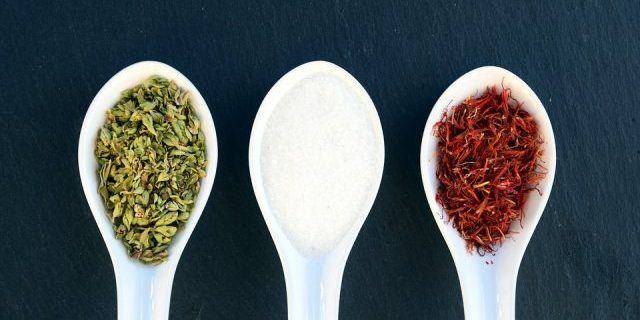
As Americans become increasingly dependent on processed foods, fast food and take out, kids and teens are consuming too much sodium.
This is a serious problem, since consuming too much sodium (which is one of the main components of salt) can make it more likely that you’ll develop high blood pressure and cardiovascular disease later in life.
A study in the Journal of the Academy of Nutrition and Dietetics showed that nearly 90% of U.S. children ages 6-18 consume too much sodium, even when not including salt added at the table. On average, 14-18 year olds consumed 3,565 mg of sodium every day. That’s around the same amount that’s in 17 cheese sticks!
To put that in perspective, the recommended sodium intake is less than 2,300 mg/day for those 14 years and older. That’s about 1 teaspoon of salt. So where exactly are children and adolescents getting their salt from? According to the study, pizza, Mexican dishes such as tacos and burritos, sandwiches, breads and rolls, cold cuts, soups, savory snacks, cheese, milk, and poultry contributed to almost half of school children’s sodium intake.
Here are some easy tips for cutting down on how much sodium you eat.
1. Cooking your own meals gives you more control over what you put into your body. When you make your own food, you know exactly how much sodium you’re consuming. Cooking is also a super important skill that you’ll need your whole life. There’s no better time to learn than now!
2. Vinegars and citrus add zing and acidity to foods so you won’t miss the salt. Using ingredients like lemon zest and balsamic vinegar add a burst of flavor that brightens up your meal. Bring a pop of flavor to salads by adding a few dashes of balsamic vinegar instead of bottled salad dressing, which often has a surprising amount of sodium.
3. “Aromatics” like garlic, ginger, scallions, and onions add a depth of flavor that provides a great foundation to food. Sautéing aromatics first can take a meal from ordinary to exceptional. Try sautéing broccoli with chopped garlic for a healthy and delicious snack or side dish.
4. Herbs and spices can elevate and lift the flavor of food. For example, thyme and rosemary are a great way to add flavor to sauces and soups. You can also try using less cheese on pizza and adding a sprinkle of dried oregano for added flavor.
5. Roast and sear meats and vegetables for a beautiful golden color and rich, savory flavor. To make roasted carrot fries, toss carrot sticks in olive oil and add a pinch each of salt and pepper (yes, a little bit of salt is fine). Roast them in a 400 degree oven until golden brown. Try serving them with a yogurt dipping sauce.
6. Rinse canned vegetables in water before cooking them, and choose low-sodium options when you can.
7. Read nutrition labels. Go for foods that have a daily value percent of sodium that’s 5% or less per serving.
8. Ask your local grocery or corner store to carry your favorite foods in low sodium varieties such as low-sodium cheese, canned vegetables and soups, and crackers
9. Snack on fruits and vegetables instead of chips, pretzels, and other high-sodium treats.
10. At delis and corner stores, ask for low-sodium cheese. Steer away from processed meats like bacon and ham, which are loaded with sodium. Instead, go for low-sodium options or grilled and carved meats. Go light with the ketchup, mustard, mayonnaise and other condiments, which (you guessed it) are often full of sodium.
Eating less sodium doesn’t mean you have to sacrifice the taste of your food. Think of it as an exciting opportunity to learn more about food, cooking, and how to take care of yourself. As an added bonus, when you cut down on sodium you may notice that you don’t feel as bloated. This is because sodium can cause your body to retain water. High-sodium foods are often also high in fat. This means that if you eat less sodium, you’ll probably also get a lot of the benefits of eating less fat, like feeling more energetic and sleeping better.
Adapting healthy habits can be hard, but it’s definitely worth it! If you’re 10-22 years old and live in NYC, consider joining Mount Sinai Adolescent Health Center’s free fitness and wellness program, Teen Fit. In addition to free, fun exercise classes, you’ll learn about nutrition, self-care, mindfulness and more! Get more info and learn how to join here.
Maeda Qureshi is a chef and dietetic intern with Teachers College, Columbia University. She holds a culinary degree from The Culinary Institute of America and is currently working on her Master’s degree in Nutrition and Public Health at Teachers College. She believes in a “food first” approach and is passionate about providing culinary nutrition through hands on cooking experience and nutritional knowledge to promote healthier lifestyle changes.
The Mount Sinai Adolescent Health Center is located in New York City. It provides comprehensive, confidential, judgment free health care at no charge to over 10,000 young people every year. This column is not intended to provide medical advice, professional diagnosis, opinion, treatment or services to you or to any other individual, only general information for education purposes only.


